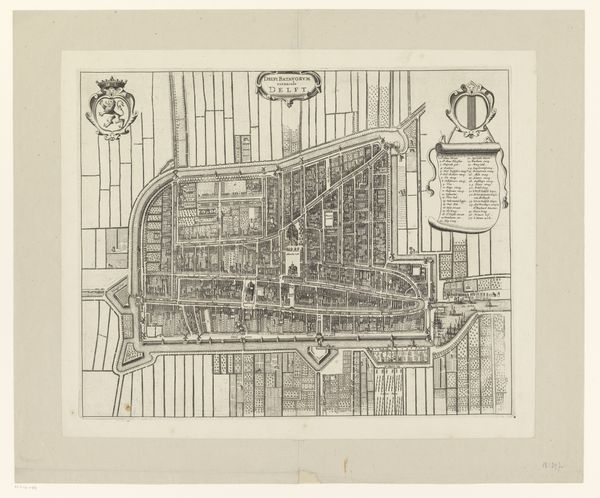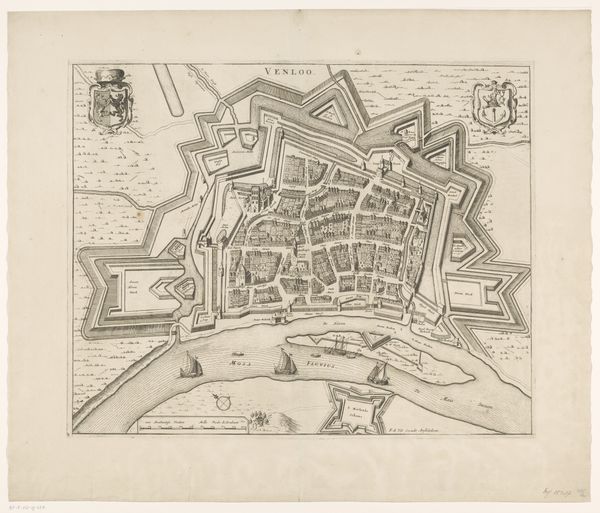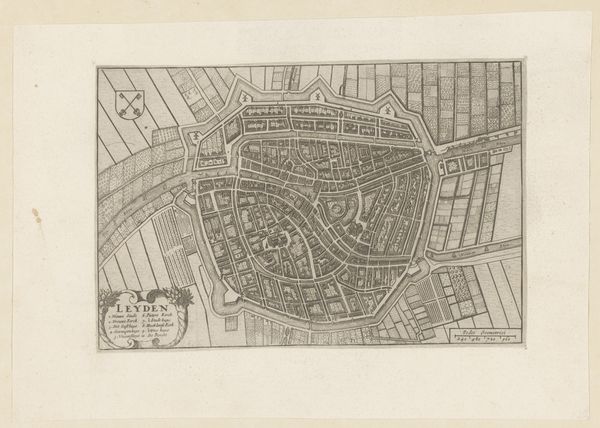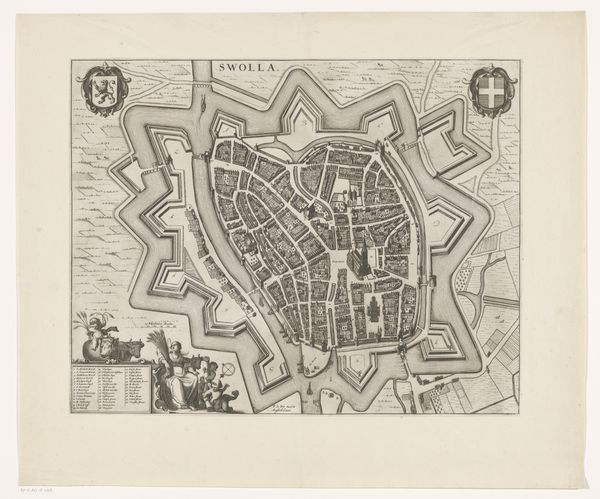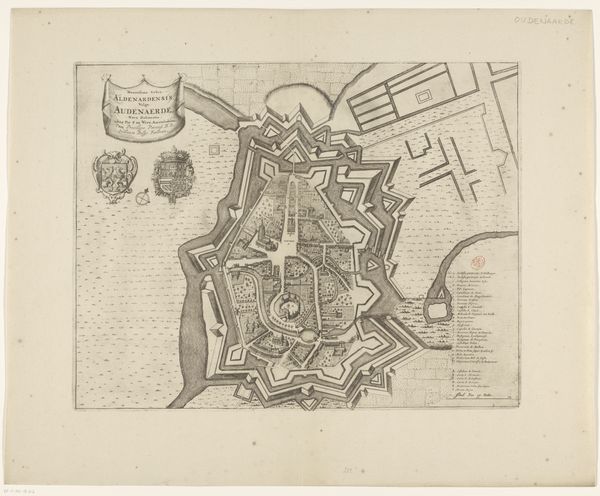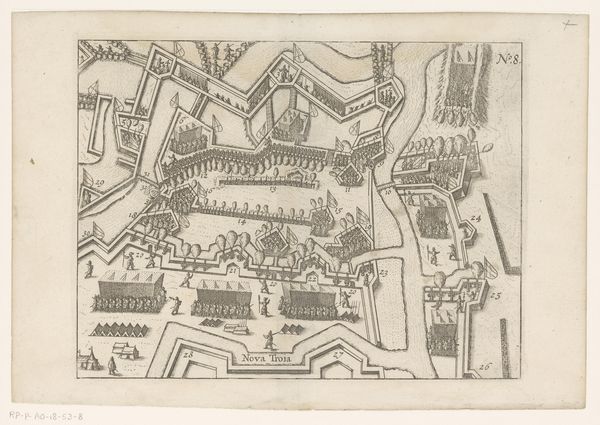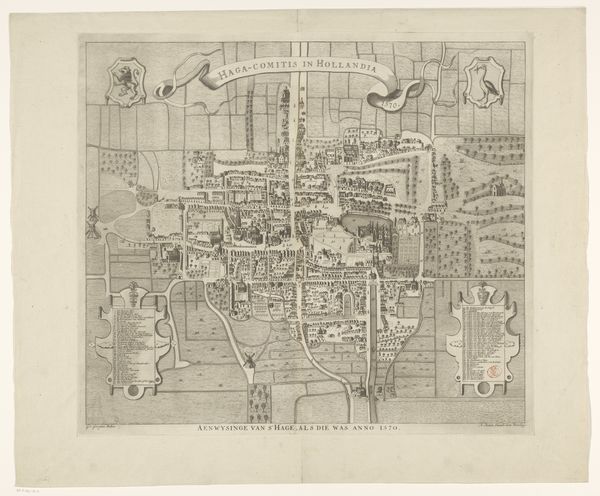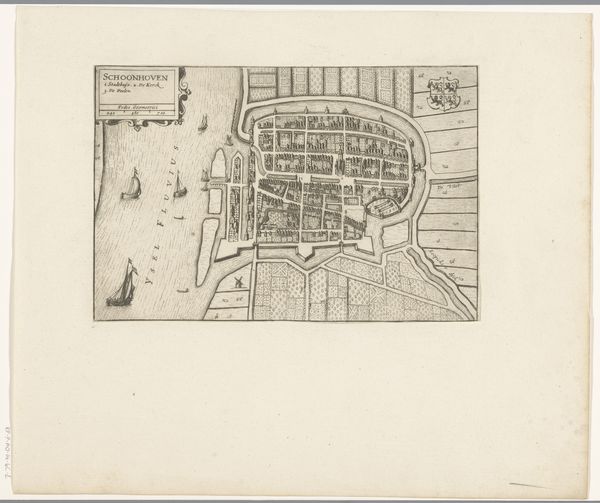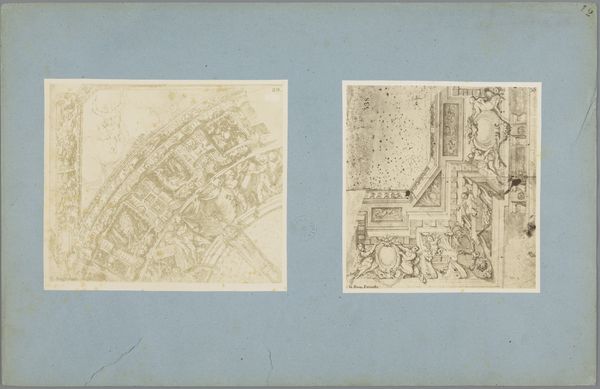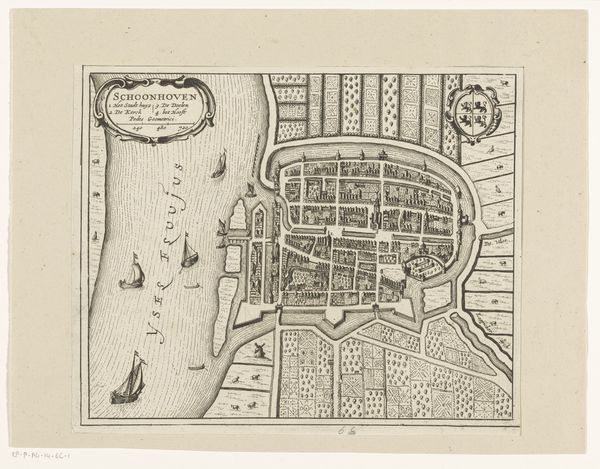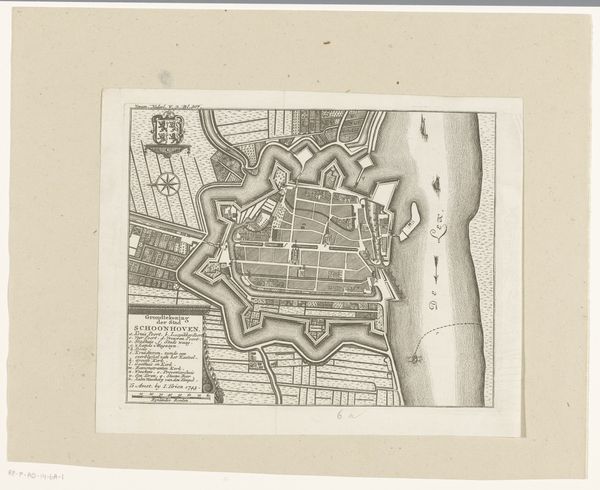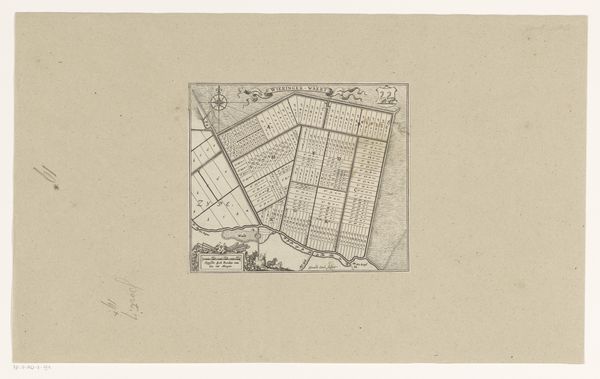
drawing, print, etching
#
drawing
# print
#
etching
#
etching
#
geometric
#
line
#
cityscape
Dimensions: height 421 mm, width 539 mm
Copyright: Rijks Museum: Open Domain
Curator: The “Plattegrond van Delft, 1672,” a print made in 1729, after an earlier work, offers us a fascinating glimpse into urban life in Delft through a bird’s eye view. I find the incredible detail mesmerizing! What strikes you most about it? Editor: I’m really drawn to the geometric patterns. It’s an etching, right? All those lines... it makes me think about the labor and the tools involved in creating such a precise image. What do you see in this piece? Curator: Well, beyond the aesthetic, the medium itself speaks volumes. Etching, as a form of reproduction, allowed for wider circulation of information, reflecting a growing commercial interest in depicting and understanding urban spaces. Think about who this map served and why they needed it. Was it purely for navigation, or did it serve another purpose, perhaps something political or economic? Editor: That's a good question. Seeing how neatly the buildings are arranged, I guess this image may represent a controlled urban planning and resource management back in the 17th century? Curator: Precisely! The print not only maps physical space but also reveals the socio-economic structures and power dynamics at play within the city. Every line, every meticulously rendered building, tells a story of labour, consumption, and the transformation of raw materials into something functional and symbolic. Notice how much land outside the city walls seems devoted to agriculture. Does that suggest anything about Delft's economic dependence on agriculture, and, consequently, the distribution of resources and labor within the city? Editor: It really makes you think about how resources like land were being used. I never really thought about the link between cityscapes and labor like that before! Curator: These city maps weren't simply geographic representations, but cultural and economic documents, recording the materials and the social relations shaping the urban experience. Editor: This has given me a totally different way to approach analysing artworks from now on. Thank you! Curator: My pleasure. Art holds a mirror to the society in which it was made, always consider the process behind an art piece to better understand its meaning.
Comments
No comments
Be the first to comment and join the conversation on the ultimate creative platform.
